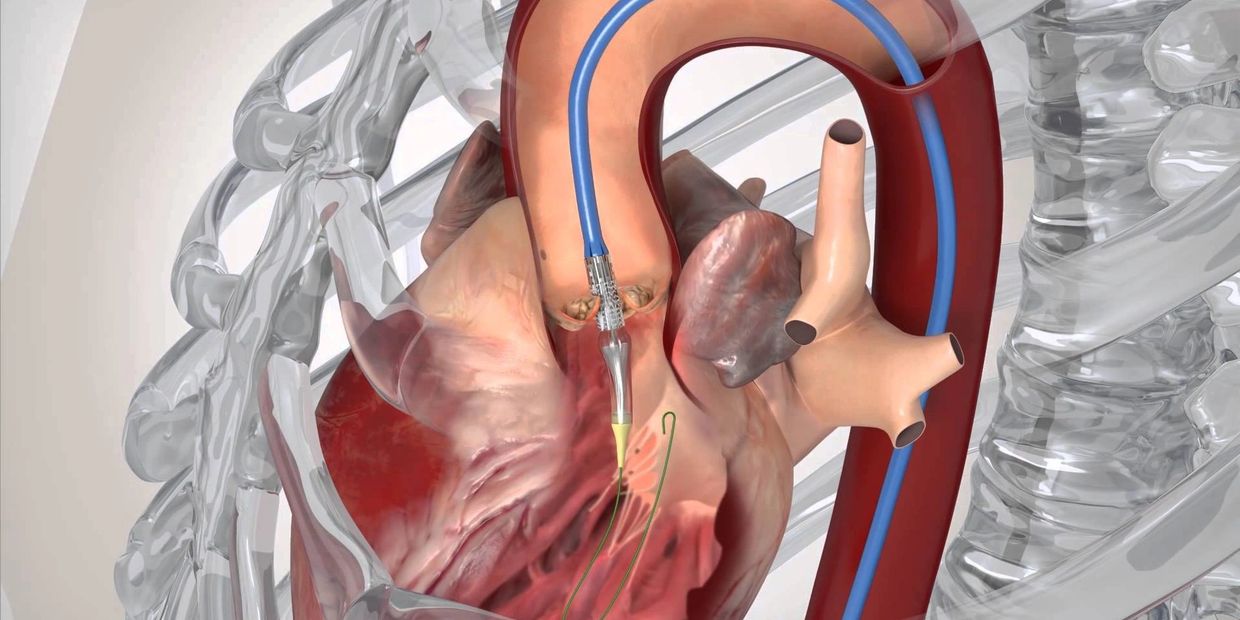Signed in as:
filler@godaddy.com
Signed in as:
filler@godaddy.com

Transcatheter aortic valve implantation (TAVI) is a minimally invasive procedure that involves the replacement of a patient's narrowed aortic valve in cases of aortic valve stenosis. TAVI may be an option for patient's that are considered to be at intermediate or high risk of complications from surgical aortic valve replacement and for those who cannot undergo open-heart surgery.
This minimally invasive procedure involves replacing the patient's diseased aortic valve with one constructed from bovine or porcine heart tissue, also called a bioprosthetic valve. In some cases, a TAVI bioprosthesis may also be placed within an existing valve that was previously implanted and is no longer functional. A "sutureless" valve is expanded by inflating a balloon, allowing it to implant into the walls of the aorta with pressure alone. There are currently three main types of sutureless aortic prostheses available on the market: the 3F Enable (Medtronic, Minneapolis, USA), Perceval S (Sorin, Saluggia, Italy) and Intuity (Edwards Lifesciences, Irvine, USA) sutureless valves.¹
The TAVI Procedure
1. The patient is first put to sleep (using general anesthesia) and is given medication through an intravenous line to prevent blood clots.
2. The surgeon makes an incision in the patient's groin to access the femoral artery, through which they will insert a catheter (hollow tube).
3. Using advanced imaging techniques, the surgeon will guide the catheter through the aorta and into the heart, precisely positioning it within the patient's aortic valve.
4. Once positioned, a balloon is expanded to fit the replacement valve (often a sutureless valve) in place of the native aortic valve.
5. When the surgeon is certain that the valve has been successfully secured, the catheter is withdrawn.,
6. The patient remains in the hospital for about two to five days to recover.
<< Minimally Invasive Procedures
¹ Hanedan MO, Yuruk MA, Parlar AI, et al. Sutureless versus Conventional Aortic Valve Replacement: Outcomes in 70 High-Risk Patients Undergoing Concomitant Cardiac Procedures. Tex Heart Inst J. 2018;45(1):11–16.
Copyright © 2019 Minimally Invasive Heart - All Rights Reserved